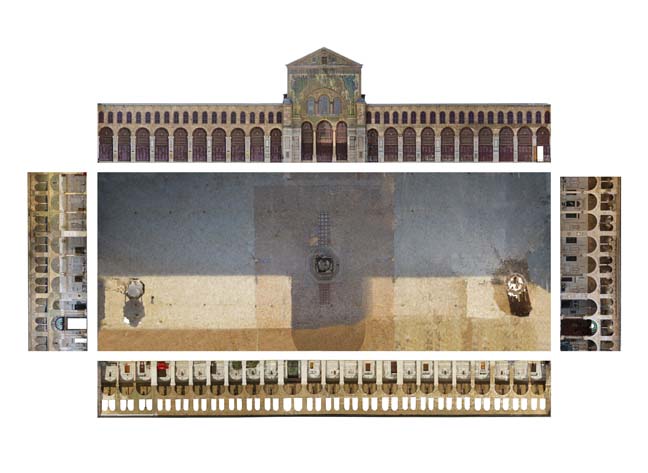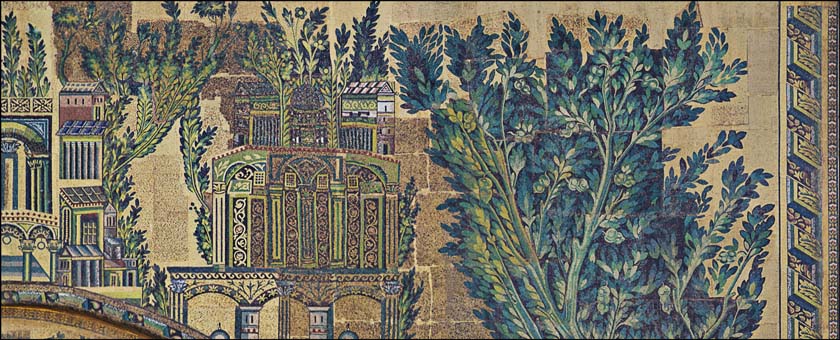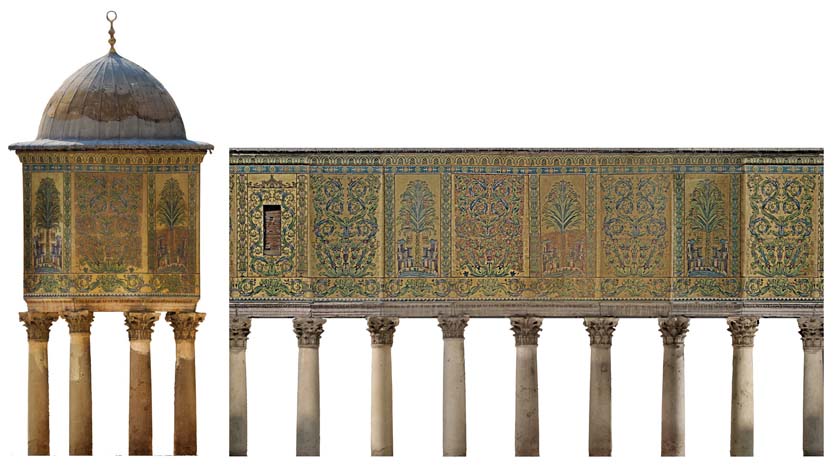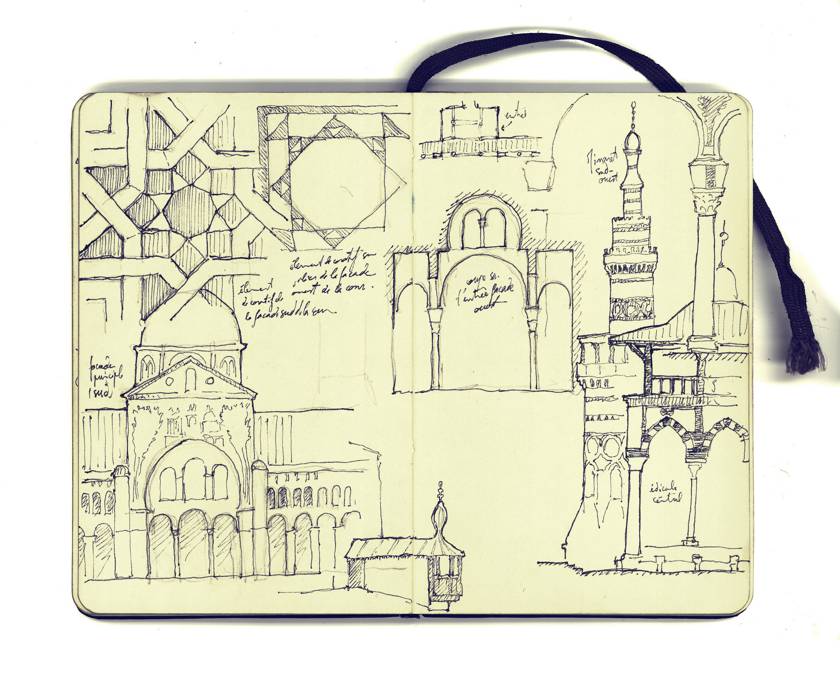The Umayyad Mosque, also known as the Great Mosque of Damascus, located in the old city of Damascus, is one of the largest and oldest mosques in the world. It is considered by some Muslims to be the fourth-holiest place in Islam.
The sacred spot where the mosque was built provided a place of divine worship for over three millennia. The Aramean king Hazael, who had taken power in 805 B.C., built a sumptuous temple for “Hadad Rimmon”, the pagan god of rain and thunder. This became one of the greatest Syrian temples, until it was savagely destroyed by the Assyrian king Tiglet Pilaser in 732 B.C. In the aftermath of the Roman conquest of Syria in 64 B.C., led by Pompeius, the temple was converted to serve Jupiter (another configuration of Hadad and Zeus), and ancient vestiges of this, such as the southern gate and parts of the outer sanctuary (the Peribolos), still remain today. Later on, during the apogee of Christianity in Europe, the Roman Emperor Theodosius I (379-395 A.D.) converted the extant temple into an imposing church, devoting it to St. John the Baptist; the building of this was completed by his son Arcadius (395-408 A.D.).
Muslim troops conquered Syria, under the leadership of the famed Khaled b. Al-Walid, in 634 A.D., meeting only with scattered and helpless resistance on the Byzantine side. Soon, in 635, Damascus became a Muslim city. During the next 72 years, the inhabitants of the town, Muslims and Christians alike, shared the holy site as a combined temple, comprising a mosque and a church next to one another. Later, the Caliph Al-Walid bagave orders for a great monumental mosque to be erected.
Al-Walid’s work began in 705 A.D. He used the ancient inner wall of the Temenos, as the framework for his new building, with a slight enlargement to the west. A host of the highest-level workers, architects and artists was brought over from Persia, India and Byzantium, as well as large quantities of the finest working materials, such as marble, mosaics, gold, silver and rare paints.
Maps of Damascus Mosque
The Great Mosque of Damascus founded the original principles with its innovated concepts. For it was the first mosque in Islamic history to feature such luxury and large size. Although this depended to a certain extent on ancient Syrian patterns, the touch of Muslim workmanship was still evident. Its rise marked the emergence of an independent style of architecture and decorative art, helping thus to embody a new personality with a firm identity.
Source: A.N. Ibesch
Bibliography
Akili (T.), 2009 : The Great Mosque of Damascus. From Roman Temple to Monument of Islam, Damas, Municipal administration, Modernisation program.
Creswell, (K A C.), 1932 : Early Muslim Architecture, I, Oxford, Clarendon Press.
Degeorge (G.), La Grande Mosquée des Omeyyades – Damas, Imprimerie nationale, Paris, 2010.





Bravo pour ce magnifique projet. Qu’il y ait partout des hommes de paix et de culture.
Amicalement,
FRH
Marvellous peace of arts
Super Boulot ! Ca me donne envie de modéliser toutes les ruines et monuments du monde! 🙂
Merveilleux. Merci pour ce projet culturel spectaculaire.
I am syrian and its really sad that i can not see my country’s heritage but thanks to this website for providing these photos and videos and making these sites unforgettable